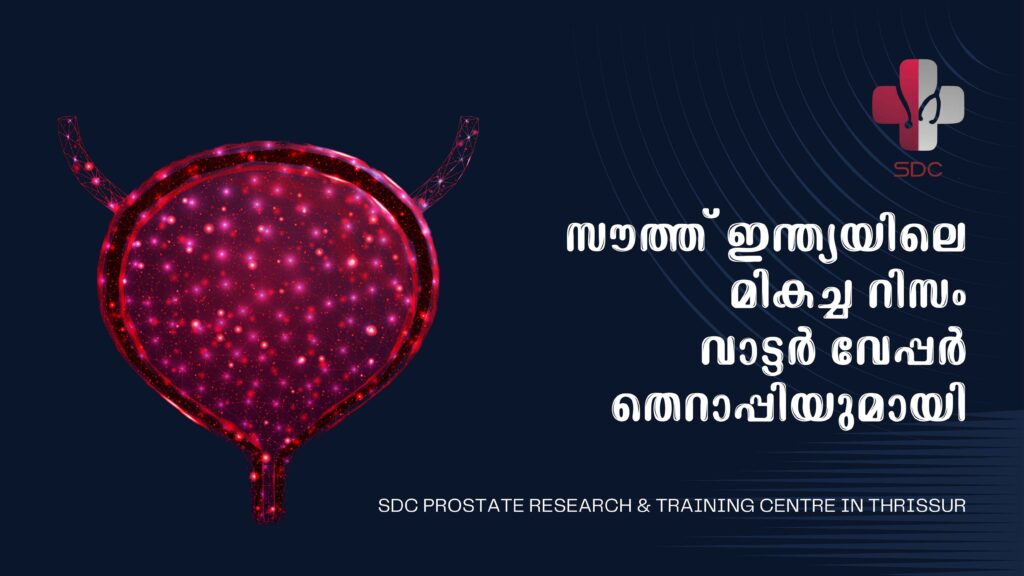As men age, certain health conditions become more common, and one of the most frequent issues is an enlarged prostate, also known as Benign Prostatic Hyperplasia (BPH). While the condition is not life-threatening, it can significantly impact quality of life by causing urinary problems, discomfort, and frustration. Thankfully, several treatments are available to manage and relieve the symptoms of an enlarged prostate.
This blog will explore enlarged prostate treatment options, how to identify symptoms, and what you can expect from various treatment methods. Whether you’re just learning about BPH or exploring treatment possibilities, this guide offers a simple and friendly way to understand your options.
What is Benign Prostatic Hyperplasia (BPH)?
Before diving into treatments, let’s take a moment to understand what BPH actually is. The prostate is a small gland located just below the bladder and in front of the rectum. It plays a vital role in male reproductive health by producing a fluid that nourishes and transports sperm.
As men age, the prostate gland can gradually enlarge. For many, this enlargement doesn’t cause any issues, but for some, the growing prostate can press against the urethra (the tube that carries urine out of the body) and cause urinary symptoms.
While BPH is not cancerous and doesn’t increase the risk of prostate cancer, it can still cause uncomfortable symptoms that require treatment.
Common Symptoms of an Enlarged Prostate
If you have an enlarged prostate, you might experience symptoms that affect your daily life. These can range from mild to severe, depending on how much the prostate has grown. Some common symptoms include:
- Frequent urination: especially at night (nocturia)
- Difficulty starting urination
- Weak or interrupted urine stream
- Dribbling at the end of urination
- Inability to empty the bladder completely
- A feeling of urgency to urinate
While these symptoms can be annoying, they aren’t usually dangerous. However, in severe cases, BPH can lead to complications like bladder infections, bladder stones, or kidney damage, making it important to seek treatment if symptoms persist or worsen.
Diagnosing BPH
If you’re experiencing symptoms of BPH, it’s important to get a proper diagnosis from a healthcare professional. During a medical examination, your doctor may perform a few tests to confirm whether your prostate is enlarged. Common diagnostic methods include:
- Digital Rectal Exam (DRE): A simple physical exam where the doctor feels the size and shape of the prostate through the rectum.
- Urine tests: To check for infection or other underlying issues.
- Blood tests: These can help rule out kidney problems.
- Prostate-Specific Antigen (PSA) test: This measures the levels of PSA in your blood. High PSA levels may suggest prostate enlargement or other prostate-related conditions.
- Ultrasound or imaging tests: To get a better view of the prostate.
Once BPH is confirmed, the doctor will recommend treatment options based on the severity of your symptoms and the size of the prostate.
Treatment Options for Enlarged Prostate
The good news is that there are many effective treatments for BPH. Depending on your specific situation, your doctor may recommend anything from lifestyle changes and medications to minimally invasive procedures or surgery. Let’s break down each option in simple terms.
1. Lifestyle Changes
For men with mild symptoms, sometimes small lifestyle adjustments can make a big difference. These changes can help reduce the severity of symptoms and prevent the condition from getting worse. Here are a few suggestions:
- Limit fluid intake in the evening: Reducing how much you drink, especially in the hours before bedtime, can help decrease nighttime urination.
- Avoid caffeine and alcohol: These can irritate the bladder and make symptoms worse.
- Practice bladder training: Going to the bathroom at regular intervals, even when you don’t feel the need, can help train your bladder to hold urine longer.
- Stay active: Regular exercise can improve bladder function.
- Maintain a healthy weight: Obesity has been linked to an increased risk of BPH, so losing weight may help improve symptoms.
2. Medications
If lifestyle changes aren’t enough to manage your symptoms, medications can be a helpful next step. There are a few types of medications commonly used to treat BPH:
- Alpha-blockers: These medications relax the muscles around the bladder and prostate, making it easier to urinate. Common examples include tamsulosin (Flomax) and alfuzosin (Uroxatral).
- 5-alpha reductase inhibitors: These drugs help shrink the prostate over time by reducing hormone levels that cause prostate growth. Examples include finasteride (Proscar) and dutasteride (Avodart).
- Combination therapy: In some cases, doctors prescribe both alpha-blockers and 5-alpha reductase inhibitors to provide maximum relief from symptoms.
While medications can be very effective, they aren’t a cure, and some men may experience side effects such as dizziness, fatigue, or sexual dysfunction.
3. Minimally Invasive Procedures
If medications don’t provide enough relief, or if you prefer a more permanent solution, there are minimally invasive procedures that can treat BPH without the need for major surgery. These treatments are generally outpatient procedures, meaning you can go home the same day. Here are a few popular options:
- REZUM: This procedure uses steam to shrink excess prostate tissue, relieving pressure on the urethra. It’s a minimally invasive treatment with a short recovery time, and many men experience significant symptom improvement.
- UROLIFT: This treatment involves placing tiny implants that lift and hold the prostate tissue away from the urethra, allowing urine to flow more freely. Like REZUM, it’s minimally invasive and has a quick recovery.
- Transurethral microwave thermotherapy (TUMT): TUMT uses microwave energy to destroy excess prostate tissue. It’s an outpatient procedure, but it may take a few weeks to notice symptom improvement.
- Transurethral needle ablation (TUNA): Similar to TUMT, TUNA uses radiofrequency energy to remove parts of the enlarged prostate tissue. It’s a safe and effective procedure for men who prefer a minimally invasive approach.
4. Surgery
For men with severe BPH or those who don’t respond to other treatments, surgery may be the best option. Surgical treatments for BPH have been around for many years and are generally very effective. Some of the most common surgical options include:
- Transurethral resection of the prostate (TURP): In this procedure, the doctor removes excess prostate tissue through the urethra using a special instrument. TURP is considered the gold standard for BPH treatment, and it offers long-term relief from symptoms.
- Holmium laser enucleation of the prostate (HoLEP): HoLEP uses a laser to remove excess tissue, providing relief similar to TURP but with a lower risk of complications.
- Open or robot-assisted prostatectomy: In cases of extremely large prostates, an open or robotic surgery may be necessary. The surgeon will make an incision to remove part of the prostate.
While surgery is highly effective, it comes with longer recovery times and a slightly higher risk of complications compared to minimally invasive procedures. However, for men with significant symptoms, the benefits often outweigh the risks.
What is REZUM Treatment?
If you’re looking for an effective, minimally invasive treatment for BPH, the REZUM procedure is worth considering. REZUM uses water vapor (steam) to target and shrink excess prostate tissue, offering relief from urinary symptoms without major surgery.
Here’s how it works:
- During the procedure, the doctor inserts a small device through the urethra into the prostate.
- The device releases controlled doses of steam, which destroys the overgrown tissue that’s causing your symptoms.
- Over time, the body absorbs the treated tissue, reducing the size of the prostate and relieving pressure on the urethra.
REZUM is usually performed as an outpatient procedure, and most men can return to normal activities within a few days. It’s a quick, effective option for men who want to avoid medications or more invasive surgery.
Recovery and Outlook
Most men recover quickly from enlarged prostate treatments, especially if they opt for minimally invasive procedures. After treatment, you can expect significant symptom relief and a noticeable improvement in quality of life. However, it’s essential to follow your doctor’s recommendations for aftercare to ensure the best possible outcome.
For men who choose surgery, recovery may take a bit longer, and there’s a chance of temporary side effects like incontinence or sexual dysfunction. Fortunately, these side effects usually improve over time.
FAQ

